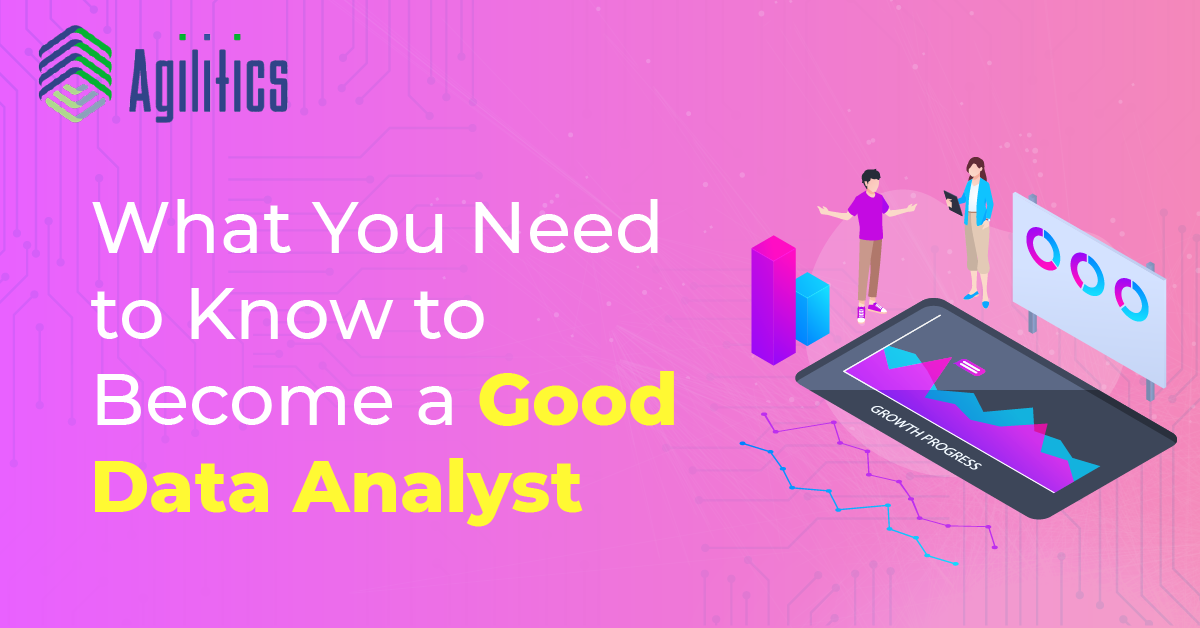It is no exaggeration to argue that modern civilisation is data-driven. Humanity creates an amazing two and a half quintillion bytes of data every day, and it doesn’t appear that this measure will ever decrease. According to a recent analysis from the International Data Corporation (IDC), the worldwide Big Data and business analytics industry has been rapidly growing over the last several years, rising from $122 billion in global sales in 2015 to $189 billion in 2019 and anticipated to reach $274 billion in 2022.
With this quick growth comes a big chance to improve your data analytics abilities, such as by participating in a data analytics boot camp tailored toward newcomers to the profession. Digital transformation has become a watchword in modern business, and skilled data analysts are in higher demand than ever. From telecommunications to manufacturing, retail, finance, healthcare, and even fitness, almost every industry has job vacancies.
Here are some of the top skills of data analyst should be counted for
PART 1: Technical Skills
To begin, it’s critical to comprehend what a data analyst works. All data analysts are concerned with data at the risk of repeating themselves, and they employ technology tools to sift through vast amounts of unstructured data and get actionable insights. These skills of data analysts are frequently in charge of cleaning up damaged data, establishing data quality, and creating reports for their boss.
a.) Data Visualisation: As the name implies, data visualisation can communicate data findings using graphics or other visuals. The goal is straightforward: It allows even individuals who aren’t skilled in data analysis to better understand data-driven insights. Data analysts can use data visualisation to assist corporate decision-makers (who may not have significant analytical knowledge) in seeing trends and comprehending complicated concepts at a glance. This functionality allows the data analyst to obtain a deeper grasp of a firm’s position, communicate relevant findings to team leaders, and even influence company decision-making.
Data visualisation has already established itself as a required skill. “Recent grads are far more likely to master hard skills when they first enter the workforce,” according to a recent study done by LinkedIn Learning. And these hard talents focus around data analysis and delivering stories based on data findings.” What was the most common skill mentioned by participants? Data visualisation, as you may have imagined.
b.) Data Cleaning: Cleansing is an essential component of attaining success, as any Marie Kondo devotee will tell you – and data cleaning is no exception! It’s one of the most important processes in putting together a working machine learning model, and it takes up a major portion of any data analyst’s day.
Even basic algorithms can produce astonishing insights when used with a properly cleaned dataset. On the other hand, Unclean data might form deceptive patterns and lead to incorrect conclusions. Data analyst qualifications, by necessity, necessitate good data cleansing abilities – there are no two ways about it.
c.) MATLAB: MATLAB is a programming language and multi-paradigm numerical computing environment that, among other things, allows you to construct algorithms, manipulate matrices, and visualise data. Businesses interested in big data have started using MATLAB because it allows analysts to significantly reduce their time pre-processing data and allows for rapid data cleaning, organising, and visualisation. MATLAB, for example, can run any machine learning model created in its environment on many platforms.
Understanding MATLAB isn’t a needed skill for data analysts, but given its vast range of applications and use, having at least a working knowledge of the environment can help you stand out to companies.
d.) R: In data analytics, R is one of the most widely used most widely utilised languages. R was voted fifth in a survey of the top ten programming languages used in 2019 by Spectrum’s Institute of Electrical and Electronics Engineers (IEEE) professional publication. R’s syntax and structure were designed to aid analytical work, and it comes with several built-in, simple data organising functions by default. Businesses like the programming language because it can manage complicated or enormous amounts of data.
Learning R should be high on every aspiring data analyst’s priority list, given its popularity and functionality.
e.) Python: However, learning Python should be a primary priority for aspiring analysts. This high-level, general-purpose programming language took first place in IEEE’s Spectrum 2019 study for a reason: it has a staggering amount of specialised libraries, many of which are relevant to artificial intelligence (AI).
The ability of Python to be used in AI development is essential. The AI software industry is expected to expand 154 per cent year over year to $22.6 billion by the end of 2020, according to Statista statistics. In an increasingly AI-focused professional market, data analysts must code in Python. Python’s auxiliary applications, such as Pandas (an open-source data analysis tool that works in tandem with Python’s programming language) and NumPy (a package that aids Python users with scientific computing tasks), should be investigated by anyone interested in expanding their Python knowledge.
f.) Domain Knowledge: Understanding topics special to the industry and firm for which you work is essential information. If you work for a firm that has an online store, for example, you may need to comprehend the complexities of e-commerce. If you’re studying data regarding mechanical systems, on the other hand, you might need to know more about those systems and how they function.
Because domain knowledge varies by business, you could find yourself having to investigate and learn rapidly. It’s impossible to analyse well no matter where you work if you don’t understand what you’re analysing. Therefore domain expertise is an important data analyst talent.
PART 2: Key Soft Skills
a.) Critical Thinking: It’s not enough to look at data; you also need to comprehend it and consider its ramifications beyond the statistics. You may think analytically about data as a critical thinker, discovering patterns and deriving actionable insights and information from the data you have. It necessitates going above and above and applying yourself to thinking rather than just digesting.
It might be tough to develop critical thinking abilities, but you can do so by challenging yourself. Try to think about the significance behind the pattern you observe the next time you’re faced with an analytical assignment or exercise. What does the data indicate about the work that has been done? What flaws does it point out? When preparing for a job in data analytics, don’t neglect to improve your critical thinking abilities.
b.) Communication: You must communicate your results to others at the end of the day. It doesn’t matter if you’re the world’s most skilled and analytical data analyst; if you can’t convey the patterns you notice to people who don’t have technical knowledge, you’ve failed.
Being a successful data analyst necessitates becoming “bilingual.” You should be able to discuss highly technical issues with your trained colleagues and offer clear, high-level explanations in a way that helps — rather than confuses — business-focused decision-makers. If you can’t, you may still need to improve your data analyst skills.
c.) Learning New Tools and Skills: A competent analysts should never rest on their laurels; they should always try to improve data, tools, presentation, and communication styles, among other things. The entire realm of data analytics is extremely dynamic and constantly changing. As a result, to stand out from the crowd, you must continue to grow yourself and expand your technical ability’s ability.
A competent analyst should never be satisfied with doing the same thing repeatedly. Instead of depending on their go-to tools and making them work in every scenario, they should choose the best tool for the task.
d.) Be Creative: A competent analyst’s habit should display data competency, flair, and mastery of data manipulation to solve or answer an organisation’s issues. This trait would aid the analyst in developing the capacity to recognise when something is seriously incorrect, such as when there is a data problem. I’ve witnessed analysts research and make recommendations based on stale data. The analyst must work with vast amounts of data from many sources and recognise important patterns and trends.
It’s critical to analyse disjointed thinking or activity, spot patterns that other people overlook, and convert those patterns into commercial implications. We seldom see somebody born with this ability, but it may be learned.
You may be interested in pursuing a career in data analytics, but you must first acquire the necessary abilities. Examine academic possibilities in your area, including undergraduate and master’s degree programmes. Consider enrolling in a data analytics boot camp if you want a faster and more cost-effective solution. These multi-week educational choices allow students to obtain a deep understanding of the technology field of their choosing for a fair fee.
Investigate your educational options and get started on building a solid foundation of data analysis abilities. A world of data analytics is waiting for you!
We strive to provide business professionals with the skills and knowledge necessary to increase work performance and drive greater return on investment for the global customers we support. Agilitics delivers customized technology and management training solutions to large corporations and government agencies around the world.


